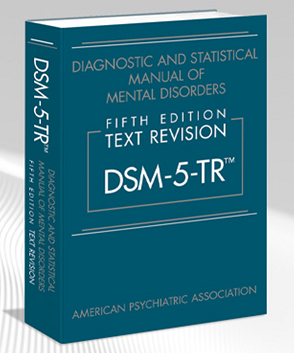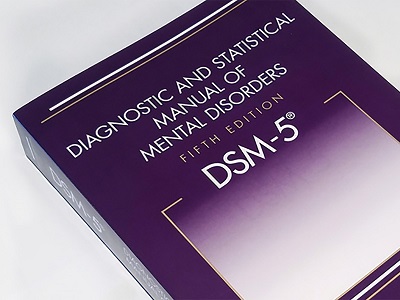Have your progress notes written for you automatically
Post Traumatic Stress Disorder (PTSD) is a mental health condition that can occur after someone has experienced a traumatic event. The Diagnostic and Statistical Manual of Mental Disorders, Fifth Edition, Text Revision (DSM-5-TR), published by the American Psychiatric Association (APA), provides guidelines for diagnosing PTSD. These criteria are useful for mental health professionals in identifying and evaluating clients who suffer from this debilitating condition.
Criteria for Diagnosing PTSD in the DSM-5-TR, 309.81 (F43.10)
The following criteria apply to adults, adolescents, and children older than six years old. These symptoms must persist for more than one month and significantly impact the individual’s functioning or cause distress.
Full copyright criteria are available from the American Psychiatric Association (2). All of the criteria are required for the diagnosis of PTSD. The following text summarizes the diagnostic criteria:
Criterion A (1 required): The person was exposed to: death, threatened death, actual or threatened serious injury, or actual or threatened sexual violence, in the following ways:
Direct exposure
Witnessing the trauma
Learning that the trauma happened to a close relative or close friend
Indirect exposure to aversive details of the trauma, usually in the course of professional duties (e.g., first responders, medics)
Criterion B (1 required): The traumatic event is persistently re-experienced in the following ways:
Unwanted, upsetting memories
Nightmares
Flashbacks
Emotional distress after exposure to traumatic reminders
Physical reactivity after exposure to traumatic reminders
Criterion C (1 required): Avoidance of trauma-related stimuli after the trauma in the following ways:
Trauma-related thoughts or feelings
Trauma-related reminders
Criterion D (2 required): Negative thoughts or feelings that began or worsened after the trauma, in the following way(s):
Inability to recall key features of the trauma
Overly negative thoughts and assumptions about oneself or the world
Exaggerated blame of self or others for causing the trauma
Negative affect
Decreased interest in activities
Feeling isolated
Difficulty experiencing positive affect
Criterion E (2 required): Trauma-related arousal and reactivity that began or worsened after the trauma occurred in the following ways:
Irritability or aggression
Risky or destructive behavior
Hypervigilance
Heightened startle reaction
Difficulty concentrating
Difficulty sleeping
Criterion F (required): Symptoms last for more than 1 month.
Criterion G (required): Symptoms create distress or functional impairment (e.g., social, occupational).
Criterion H (required): Symptoms are not due to medication, substance use, or other illness.
Two specifications
Dissociative Specification.
In addition to meeting the criteria for diagnosis, an individual experiences high levels of either of the following in reaction to trauma-related stimuli:
Experience of being an outside observer of or detached from oneself (e.g., feeling as if “this is not happening to me” or one were in a dream).
Experience of unreality, distance, or distortion (e.g., “things are not real”).
Delayed Specification.
Full diagnostic criteria are not met until at least 6 months after the trauma(s), although the onset of symptoms may occur immediately.
Differential Diagnosis
Differential diagnosis involves distinguishing one disorder from others that exhibit similar symptoms. When diagnosing PTSD, it is essential to differentiate it from disorders with overlapping symptoms. Here are disorders that could be considered during the process of diagnosis:
1. Acute Stress Disorder (ASD). ASD shares many symptoms with PTSD. It typically occurs within three days to four weeks following trauma and can last anywhere from three days to four weeks. The main difference lies in the time frame – if the symptoms persist beyond four weeks, a diagnosis of PTSD may be more appropriate.
2. Depressive Disorder. Depression can present with symptoms that overlap with those of PTSD, including mood changes, feelings of guilt or worthlessness, and thoughts of self-harm or suicide. However, depression is generally not linked to an event and tends to be more pervasive and chronic in nature. Depression may lack symptoms like nightmares or flashbacks that are characteristic of PTSD.
3. Generalized Anxiety Disorder (GAD). GAD involves worry and excessive anxiety about everyday situations rather than being connected to one specific traumatic event. While both GAD and PTSD involve symptoms like irritability, difficulty concentrating, and sleep disturbances, GAD’s hallmark feature is worry.
4. Panic Disorder. Panic disorder is characterized by panic attacks. These attacks can sometimes be triggered by memories, but panic disorder involves physical symptoms such as rapid heart rate, shortness of breath, nausea, and sweating.
5. Adjustment Disorder. Adjustment disorder occurs when an individual experiences distress in response to a life event. Symptoms are generally less severe and do not meet the criteria for PTSD. Symptoms tend to resolve once the stressor is removed.
6. Substance Use Disorders. Substance abuse can lead to symptoms that resemble those of PTSD—including mood changes, avoidance, and heightened arousal. When PTSD co-occurs with substance use, it can be challenging to distinguish between the effects of substance use and underlying trauma-related symptoms.
7. Borderline Personality Disorder (BPD). BPD is primarily characterized by challenges in forming and maintaining relationships and identity disturbances, which may not be as prominent in individuals with PTSD. 14.
To accurately diagnose PTSD, it’s crucial to conduct an assessment that involves an interview, a review of medical and psychological histories, consideration of symptom duration and nature, and standardized assessment tools. An accurate diagnosis is essential for providing effective treatment tailored to the client’s needs.
Treating PTSD
Treating PTSD requires a comprehensive, holistic, multifaceted, and client-centered approach that acknowledges the complex interplay of psychological, emotional, and physiological factors:
1. Psychotherapy and Counseling. Evidence-based psychotherapy is a cornerstone of PTSD treatment and includes modalities such as Cognitive Behavioral Therapy (CBT). Therapists work with clients to reframe negative thought patterns, process traumatic memories, and develop coping strategies to manage triggers and distressing emotions.
2. Eye Movement Desensitization and Reprocessing (EMDR). This therapeutic approach combines elements of cognitive therapy, exposure therapy, and bilateral stimulation to help clients process traumatic memories and reduce distressing symptoms. Bilateral stimulation, such as eye movements, is thought to stimulate the brain’s natural processing mechanisms, allowing the client to integrate traumatic memories in a less distressing way.
3. Medication. Selective Serotonin Reuptake Inhibitors (SSRIs) and Serotonin-Norepinephrine Reuptake Inhibitors (SNRIs) are commonly prescribed antidepressants that can help reduce anxiety, depression, and intrusive thoughts.
4. Social Support. Building and maintaining a strong support network is essential. Friends, family, and support groups can provide a safe space to share experiences, discuss challenges, and receive validation. Social connections help combat isolation and promote a sense of belonging and understanding.
5. Self-Care Strategies. Engaging in regular exercise, practicing mindfulness and relaxation techniques, maintaining a balanced diet, and prioritizing rest are all important self-care strategies that contribute to overall emotional and physical well-being.
6. Education. Learning about common symptoms, triggers, and coping strategies helps clients develop a sense of empowerment and control over their recovery.
7. Gradual Exposure. Gradual exposure to triggers and traumatic memories can help clients desensitize their reactions over time, reducing the intensity of emotional responses.
8. Lifestyle Changes. Reducing substance use, avoiding stressors whenever possible, and practicing relaxation techniques all contribute to overall well-being and improve symptom management. 16.
Conclusion
The diagnostic criteria outlined in the DSM-5-TR offer mental health professionals a framework to accurately identify individuals affected by traumatic events. By delineating symptom clusters and diagnostic requirements, the DSM-5-TR assists in the accurate assessment and appropriate treatment of PTSD. By identifying the issue and implementing suitable measures, individuals who have endured traumatic experiences can receive the necessary assistance to cope with their symptoms and regain a sense of empowerment in their daily lives.
Reference:
- American Psychiatric Association. (2022). Generalized anxiety disorder. In Diagnostic and Statistical Manual of Mental Disorders (5th ed., text rev.).










